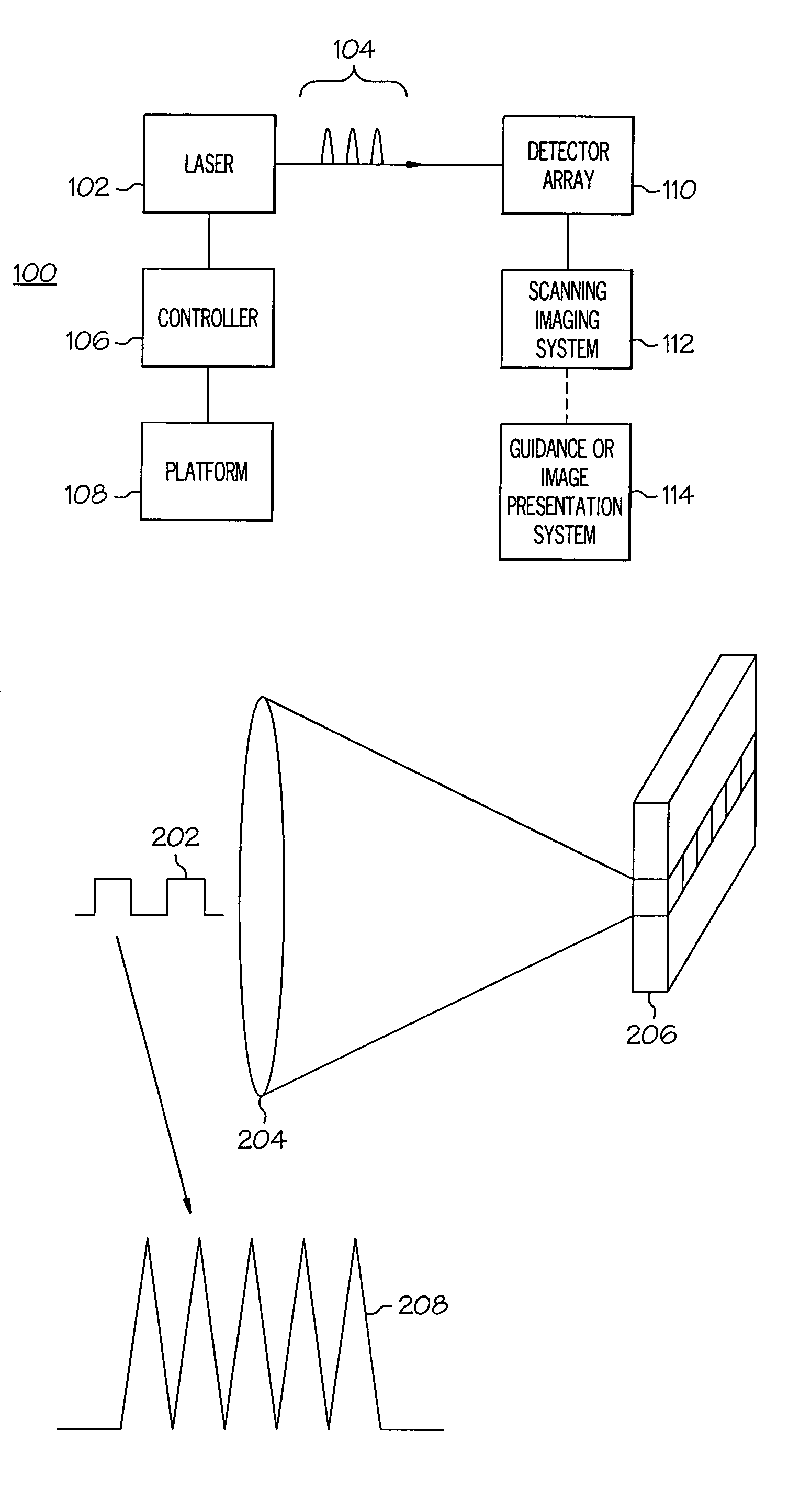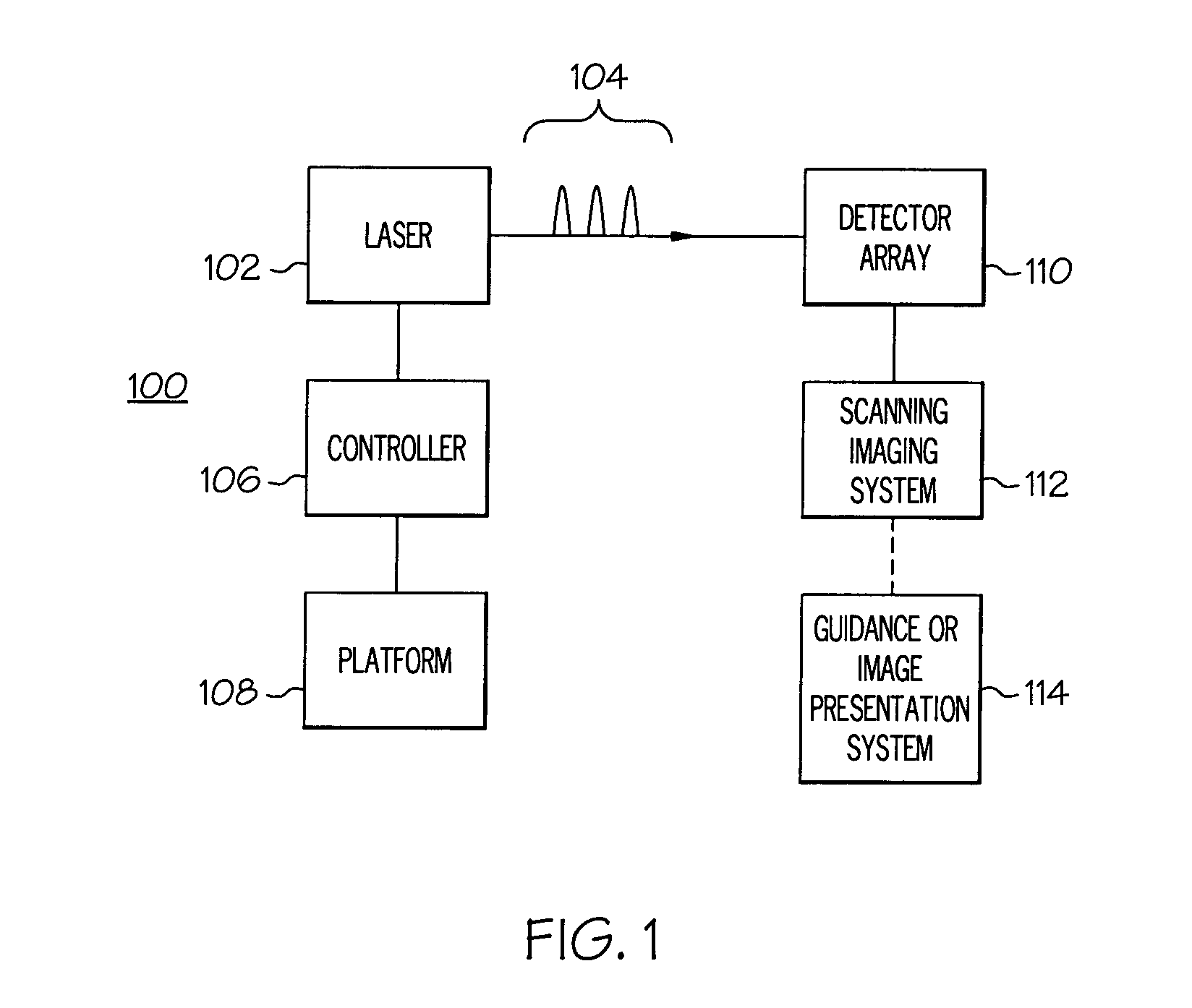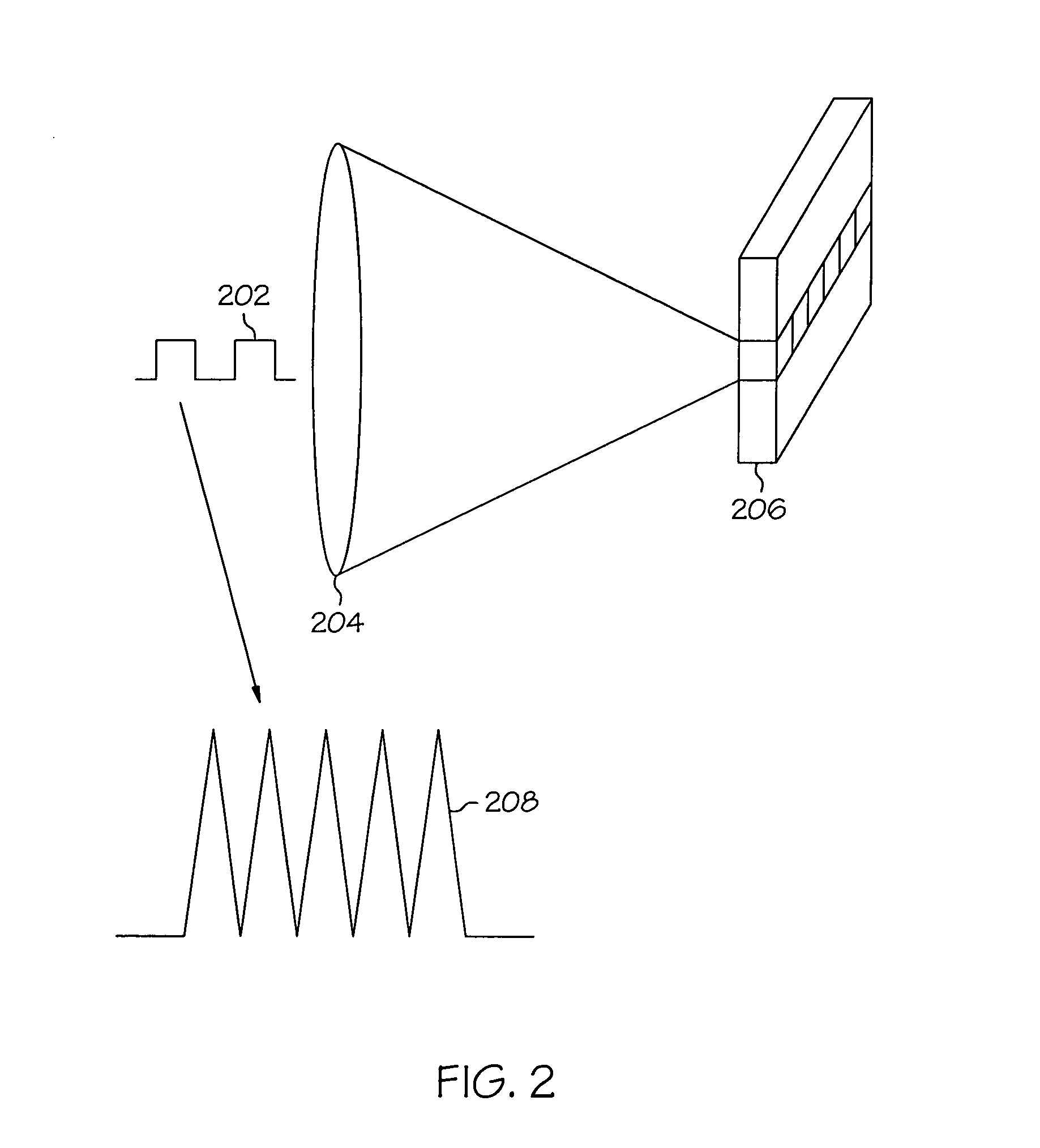System and processes for causing the simultaneity of events including controlling a pulse repetition frequency of a pulsed laser for disabling a scanning imaging system
a scanning imaging system and pulsed laser technology, applied in discharge tubes/lamp details, instruments, weapons, etc., can solve the problems of laser-induced damage of array material, inability to disassemble pixel or array, and damage to infrared detector arrays
- Summary
- Abstract
- Description
- Claims
- Application Information
AI Technical Summary
Benefits of technology
Problems solved by technology
Method used
Image
Examples
example 1
[0060]Controlling a pulsed laser to disable a scanning optical imaging system that has eight lines per frame and a scanning rate of 30 Hz. A scanning optical imaging system can have an internal field of view or image frame that is scanned when a rotating mirror is placed on the optical path within the scanning optical imaging system. The frame can be larger than a detector array placed at the foal plane. For such a system having a frame that is eight times as wide as the detector array, the system has eight lines per frame (LPF) or LPF of eight. As a result, the frame for this system traverses eight detector or line widths as the frame scans past the detector array in the focal plane. Because the rotating mirror has a frequency of repetition, it consequently scans the frame across the detector array at a certain frame rate, e.g., 30 Hz. The frame rate FR when multiplied by the lines per frame determines how many lines in the systems are scanned per second, which is the line rate. Fo...
PUM
 Login to View More
Login to View More Abstract
Description
Claims
Application Information
 Login to View More
Login to View More - R&D
- Intellectual Property
- Life Sciences
- Materials
- Tech Scout
- Unparalleled Data Quality
- Higher Quality Content
- 60% Fewer Hallucinations
Browse by: Latest US Patents, China's latest patents, Technical Efficacy Thesaurus, Application Domain, Technology Topic, Popular Technical Reports.
© 2025 PatSnap. All rights reserved.Legal|Privacy policy|Modern Slavery Act Transparency Statement|Sitemap|About US| Contact US: help@patsnap.com



